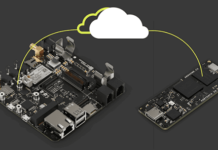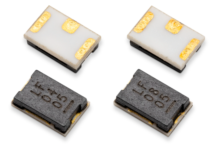
Introduction
In the rapidly evolving landscape of technology and automation, the field of mechatronics has gained significant prominence. Combining mechanical engineering, electronics, and computer science, mechatronics designers play a pivotal role in developing and integrating advanced systems that drive innovation across industries. In India, where the demand for skilled professionals in this field is on the rise, Electronic Sector Skills Council of India (ESSCI) has emerged as a crucial player in nurturing talent and shaping successful careers. In this article, we will explore the exciting career prospects in mechatronics design, the skills required to thrive in this field and delve into the significant role played by ESSCI.
The Growing Demand for Mechatronics Designers in India:
The current market size of mechatronics in India is projected to grow significantly in the coming years. According to the Statista Market Forecast, it is projected to grow by 4.63% (2023-2028), resulting in a market volume of US$ 639.50 million in 2028. This indicates a substantial growth potential for the mechatronics industry in India. With industries across manufacturing, automotive, aerospace and others increasingly adopting automation solutions, the mechatronics sector has witnessed steady growth aided by government initiatives like ‘Make in India’.
Additionally, the growing need for skilled professionals in the field of mechatronics and robotics is expected to further fuel the market growth. With India’s vibrant industrial landscape and the adoption of automation technologies, the demand for skilled mechatronics designers has witnessed a significant upswing.
- Manufacturing Sector: Mechatronics designers in the manufacturing sector are instrumental in optimising production processes through the design and implementation of automated systems. They contribute to the development of efficient assembly lines, robotic systems, and smart manufacturing solutions that enhance productivity, quality, and cost-effectiveness.
- Automotive Industry: The automotive sector relies heavily on mechatronics designers to develop advanced driver assistance systems (ADAS), autonomous vehicles, and intelligent control systems. These professionals contribute to the evolution of vehicles with features like adaptive cruise control, collision avoidance, and self-parking capabilities.
- Healthcare and Medical Devices: Mechatronics designers make significant contributions to the development of cutting-edge medical devices and healthcare technologies. They design and integrate robotic surgical systems, prosthetics, rehabilitation devices, and imaging systems, aiming to enhance patient care and improve treatment outcomes.
- Aerospace and Aviation: In the aerospace industry, mechatronics designers contribute to the development of unmanned aerial vehicles (UAVs), spacecraft systems, and control systems for aircraft. Their expertise in integrating mechanical, electrical, and software components ensures the reliability and safety of aerospace systems.
- Electronics Manufacturing: Mechatronics has become integral to automation in modern electronics manufacturing. Key areas where mechatronics has made major impact include printed circuit board assembly, semiconductor fabrication, SMT placement machines, robotic arms for material handling, automated visual inspection systems, failure analysis systems and several testing processes. By powering inline metrology, process control solutions, prototyping technologies and other connected factory enablers, mechatronics is driving tremendous efficiency, higher yields, and quality standards across large as well as smaller electronic manufacturing set-ups.
Mechatronics Design: The Intersection of Engineering Disciplines
Mechatronics design involves the integration of mechanical, electrical, and computer engineering principles to create intelligent systems and products. It encompasses diverse applications, including robotics, automation, artificial intelligence, consumer electronics, and automotive systems. Mechatronics designers are involved in the entire product development lifecycle, from conceptualization to prototyping and testing. They collaborate with cross-functional teams, translating user requirements into functional designs that seamlessly blend mechanical and electronic components. They must possess knowledge in mechanical design, electronics, sensors and actuators, embedded systems, control systems, and software development. They should be comfortable working across various engineering disciplines.
Role of Electronics Sector Skills Council of India (ESSCI):
ESSCI’s primary objective is to bridge the skill gap in the electronics system design and manufacturing (ESDM) industry, including the field of mechatronics, by fostering industry-academia collaboration and providing training and certification programs. ESSCI has developed 3 courses/ Qualification Packs, Mechatronics Maintenance Specialist and Mechatronics Designer and System Integrator, Robotic Automation Lead for different job roles. These programs encompass various levels, from entry-level technician courses to advanced specialisation programs. They provide participants with the necessary theoretical knowledge and hands-on training to excel in their careers as mechatronics specialist and designers. These certifications serve as a testimony to an individual’s competence and proficiency, boosting their employability and career prospects.
ESSCI’s placement assistance program is also helping mechatronics engineers find jobs. This program provides mechatronics engineers with access to a network of employers who are looking for qualified candidates. By providing training and certification programs, ESSCI is helping to ensure that there is a skilled workforce available to meet the growing demand for mechatronics engineers.
Job opportunities for mechatronics professionals in the electronics sector
Mechatronics professionals are highly sought after in the electronics sector due to their unique combination of skills in mechanical engineering, electronics, and computer science. As technology continues to advance, the demand for mechatronics expertise grows across various industries, including the electronic sector. Here are some job opportunities for mechatronics professionals in the electronic industry:
- Robotics Engineer: Mechatronics professionals can design, develop, and program robotic systems used in manufacturing, healthcare, logistics, and other industries. They work on creating intelligent and automated machines that incorporate sensors, actuators, and control systems.
- Control Systems Engineer: Mechatronics professionals can work on the design, development, and optimization of control systems used in various applications, such as HVAC systems, industrial processes, and consumer electronics.
- Product Development Engineer: Mechatronics designers play a vital role in developing innovative consumer products, such as smart appliances, wearable devices, and IoT-enabled gadgets. Their expertise in integrating mechanical and electronic components ensures seamless functionality and user experience.
- Electronics and Instrumentation Engineer: With their expertise in both mechanical and electronic systems, mechatronics professionals can work on the design and development of instrumentation and electronic devices used in a wide range of industries.
- Research and Development (R&D) Engineer: Mechatronics experts are often involved in research and development teams, working on innovative technologies, prototypes, and improving existing products.
- Product Testing and Quality Control Engineer: Mechatronics professionals can also work in testing and quality control roles, ensuring that electronic systems and products meet the required standards and specifications.
- Automation Engineer: Mechatronics experts are well-suited for designing and implementing automated systems in industries like manufacturing, automotive, and aerospace. They work on integrating sensors, programmable logic controllers (PLCs), and other electronic components to streamline processes and increase efficiency.
Remember, the job opportunities for mechatronics professionals in the electronics sector are not limited to these roles. Many other industries and emerging technologies are seeking professionals with mechatronics expertise to tackle complex challenges and drive innovation.
Career in Mechatronics
With the right skill set and industry-relevant training, individuals can embark on a fulfilling journey in this field. Fresh graduates in mechatronics can start their careers as assistant mechatronics designers, working under the guidance of experienced professionals. With experience, mechatronics designers can progress to more advanced roles, taking up responsibilities for designing and developing complex mechatronic systems. They contribute to research and development activities, collaborating with interdisciplinary teams to create innovative solutions. Seasoned professionals in mechatronics design can transition into leadership and managerial roles. They oversee project teams, drive innovation, manage resources, and ensure the successful execution of mechatronic projects.
Conclusion: The field of mechatronics designer in India offers exciting and rewarding career opportunities. As industries increasingly adopt automation and advanced technologies, the demand for skilled mechatronics designers continues to grow.


















